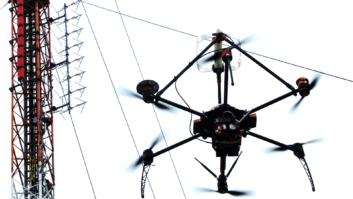The ULS is one of those websites that has way more information than you’ll ever need; here’s how to make sense of it all.
Say for example you want to install a newly licensed 950MHz band system at a mountain-top transmitter site. As part of the licensing process, frequency coordination was done, and (luckily for you) your new system requirements worked out with all parties concerned (co-channel and first- and second-adjacent channel users as well). But at a mountain top site it is often very important to know what else may be going on in the RF neighborhood because, even though some users may be many megahertz away from your channel, they could still affect what you are doing.
Using this same example, let’s determine if paging transmitters are located on-site, and if so, what frequencies they use. (Paging transmitters can be the bane of existence for digital STL systems.) Here’s how we go about this.
- Determine site coordinates. There are many ways to do so, but in this example, I’m picking a tower ASR number at a site in western Washington State. From that I gather the NAD 83 coordinates.
- Browse the ULS database.
- Click “advanced license search” on the left side of the page.
- Under the heading “Call sign and radio services” select “match only the following radio services,” and then type “CD” – paging and radiotelephone services.
- Under the heading “frequencies” I use the range 920 to 960MHz
- In the lower right corner, click “geosearch.”
- Scroll to “coordinates” and enter your NAD 83 coordinates. I usually pick a 1km radius around the tower site as well, as shown below in Figure 1.

Now finally, click on “search” and relax for a few minutes – it takes a little time to get the results. My search parameters were narrow and as it turns out, there isn’t that much at this site, as the results show in Figure 2.
So there are at least two possible paging transmitters at the site in question. (The others were all listed as expired.) Click on the call signs and you can read their particulars. Both KNKL960 and KNKM580 are listed as active, and are licensed at the site on frequencies of 931.0625 and 931.1375 respectively. In both cases, the ERP is just over 300W.
What next?
Now that you have this information, what do you do with it? Well as I mentioned earlier, if you were installing a digital STL receiver at this site, it would be wise to install a filter ahead of it to prevent desense, which is quite likely when these 300W ERP paging transmitters key on and off. When the receiver is installed, take a spectrum analyzer along and look at the receive antenna for these particular paging transmitters. Make notes about whatever else you see between 920 and 960MHz.

There is one more thing you can do with this information. If, when you installed the transmit side of this new link, you had the antenna direction tweaked and found it to be right on your licensed parameter (as it should be), then take that spectrum analyzer, connect it to your transmit antenna, and look for these paging transmitters. Make a note of their strength. This information can be very valuable if, for some reason, you have to repair and later re-install the transmit antenna because you can use these paging transmitters as beacons for finding the site in question and at least roughing-in the bearing of the antenna in question. Also, you can conclusively determine the overall health of your transmit antenna/coax system by comparing the beacon strengths from the day of installation to those taken immediately after the repair.
Irwin is transmission systems supervisor for Clear Channel NYC and chief engineer of WKTU, New York. Contact him at [email protected].







